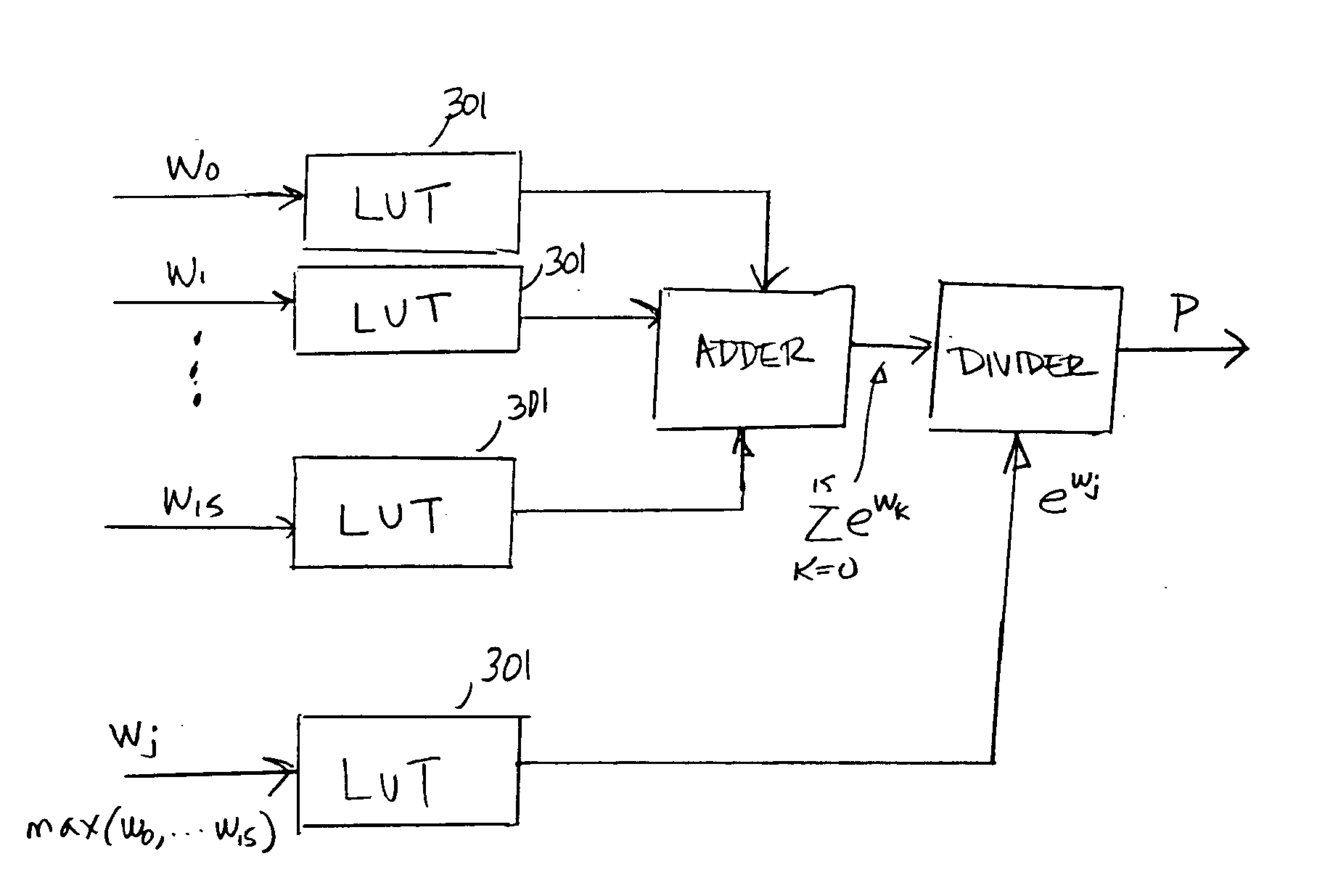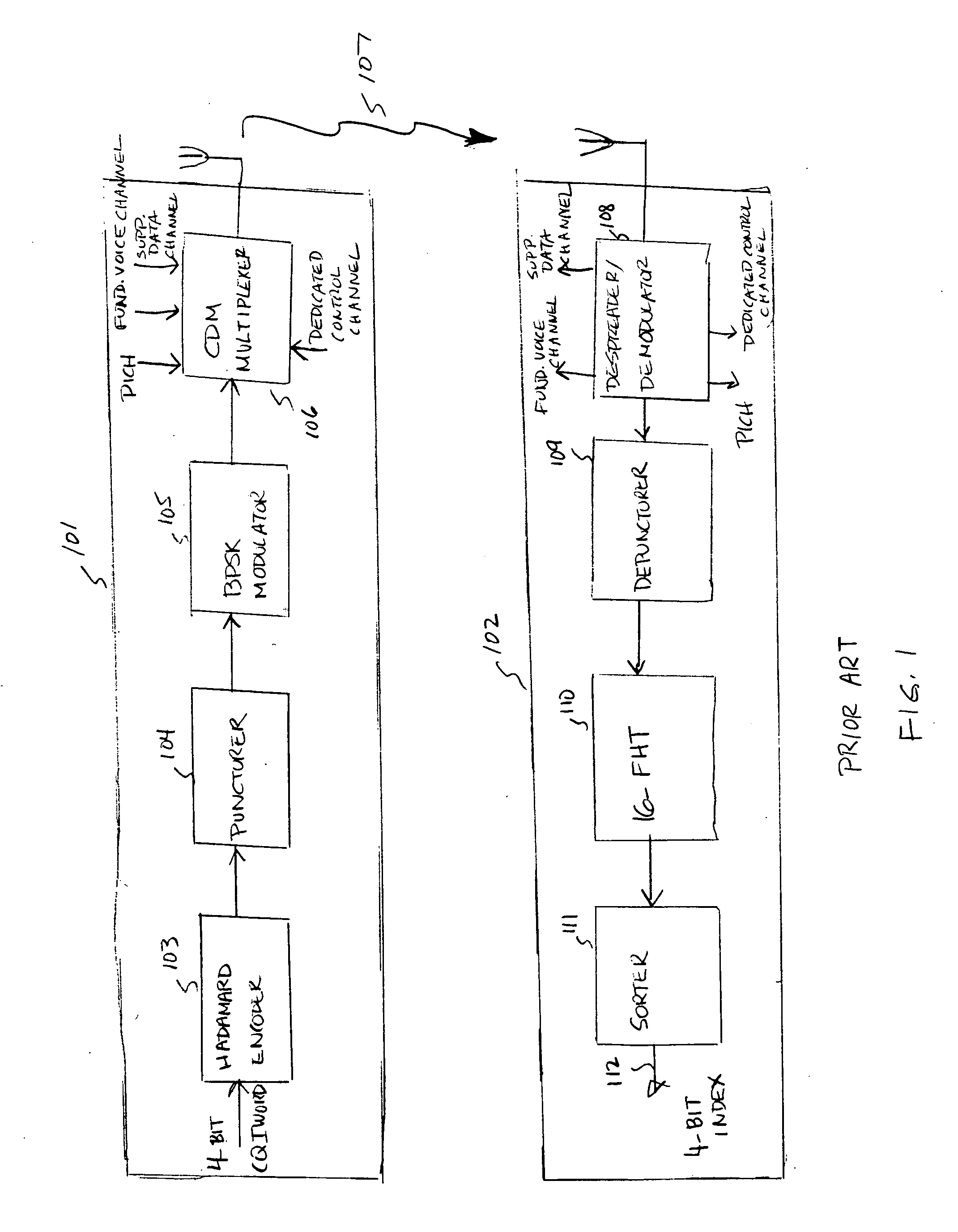Method and apparatus for enhancing performance of channel quality indicator (CQI) channel in wireless communications system
a wireless communication system and channel quality indicator technology, applied in the field of wireless communication, can solve the problems of affecting system latency, high probability of transmission not being accurately received by the mobile terminal, and affecting system performan
- Summary
- Abstract
- Description
- Claims
- Application Information
AI Technical Summary
Benefits of technology
Problems solved by technology
Method used
Image
Examples
Embodiment Construction
[0009] As aforenoted, knowledge by the base station of the reliability of a decoded CQI word is advantageous for higher layer processing. As noted, one motivation for generating a reliability function at the base station for the decoded CQI is that the Ec / Nt pilot SNR to which it corresponds is used by the higher layer to allocate a downlink packet data rate, to select a modulation scheme to be used on the downlink (e.g., QPSK, 8-PSK, 16-QAM), and to determine the power at which to transmit on the downlink. By providing the higher layer with knowledge of how reliable the decoded CQI word is, this information then can be used in making a better decision regarding selection of these downlink parameters. A second motivation for generating a reliability function for the decoded CQI word is that the reliability information can be used by the higher layer to monitor the propagation channel condition and to adjust the CQI report repetition rate and report interval accordingly. For example,...
PUM
 Login to View More
Login to View More Abstract
Description
Claims
Application Information
 Login to View More
Login to View More - R&D
- Intellectual Property
- Life Sciences
- Materials
- Tech Scout
- Unparalleled Data Quality
- Higher Quality Content
- 60% Fewer Hallucinations
Browse by: Latest US Patents, China's latest patents, Technical Efficacy Thesaurus, Application Domain, Technology Topic, Popular Technical Reports.
© 2025 PatSnap. All rights reserved.Legal|Privacy policy|Modern Slavery Act Transparency Statement|Sitemap|About US| Contact US: help@patsnap.com



